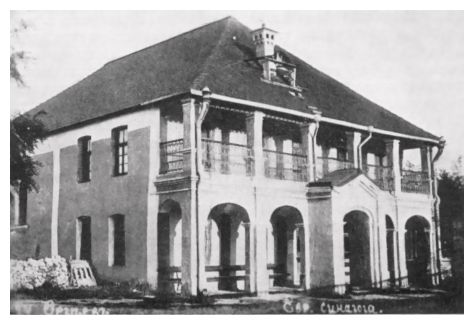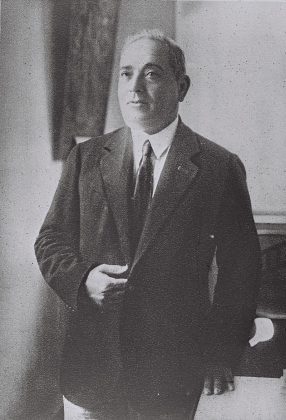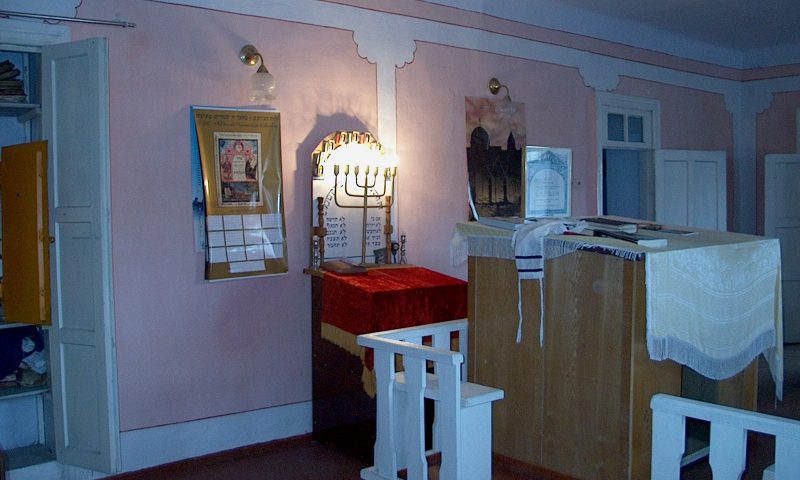Moldova_Orhei city
Orhei city
The town is situated in the central part of the Republic of Moldova on the banks of the river Reut. The population is about 21 thousand people; the area is about 16.5 square km. Located on hills, which contributes to erosion and landslides. The settlement was established in 1470, on the site of a former fortress and the center of the Golden Horde. The word Orhei means a fortress and the residence of the commanders of the ruler was located there. In 1538, the Turkish Sultan Suleiman the Magnificent destroyed the fortress. The town is transferred 12 km aside to its modern place. The date of the new foundation is 1554. New residents began to arrive. A dam was built between the Kula and Reut rivers, a reservoir and several artificial islands were formed. Trade was actively developing, there were caravanserais, taverns, and a large market. In the 17th century, the Cossacks attacked the town several times. In 1758, it was ravaged by the Budzhak horde of the Nogai Tatars. Orhei was the center of Turkish administration. In 1812, it became the center of a district of Bessarabia within Russia. In 1941, here were fierce battles between Soviet and Romanian-German troops. The town was almost completely destroyed, most of the inhabitants left or died. After the war, Orhei is reborn and expanded.
In 1897, a railway was built, and in the period between the world wars, an airport. From 1941 to 1944, during the war, Balti was destroyed by 80%. After the war, the city is restored, it becomes a regional center. In 1994 it was given the status of a municipality.
Orhei in detail
Jews appeared on the territory of modern Orhei in the 16th century and were the first settlers to the new place. They were attracted by the convenient location near transport routes. Jews were actively engaged in trade and cultivation of agricultural land. Until 1940, they made at least 50% of the town’s population. Many Jews also lived in the settlements of the Orhei district. In the 17th century, during the invasion of the Cossacks of Bogdan Khmelnitsky and his son Timothy, Orhei was captured several times. The robbery and massacre of the Jewish population was organized. In the 19th century, construction of synagogues begins. There were four praying houses in Orhei, 10 more and two synagogues in the Orhei district. During the census of 1897, about 12,500 people lived in Orhei, including more than 7,000 Jews. About 27,000 Jews live in the county. In the 20th century, there were 14 synagogues, but the Jewish population is declining due to moving to Chisinau or other countries. In 1940, 6,400 Jews live in Orhei. Since it was occupied by Romanian and German troops in July, some of the Jews had the opportunity to evacuate.The fate of the evacuees was different. A resident of Orhei, Shabs Mashkautsan managed to escape to the Caucasus, was drafted into the Red Army, took part in the Berlin operation, and became a Hero of the Soviet Union. He later emigrated to the USA. When leaving the USSR, he was deprived of all military awards. However, many of the Jews who tried to get out of the town were shot in Dubossary, burned alive in lime pits in Rezina, and tortured to death in the Rybnitsa ghetto.
In Orhei Romanians stationed a gendarmerie battalion, which consisted of former members of the Iron Guard distinguished by cruel anti-Semitism and sadism. Columns of Jews who were driven from Chisinau to Transnistria passed through Orhei. They were met by gendarmes, carts were taken away and people were driven to the Dniester on foot. The old and sick were killed, valuables, documents and money were seized. Totally 4,000 Jews were killed in Orhei. By 1943, only 15 Jews remained in the town. After liberation, the settlement began to recover. In 1989, the Jewish community was registered. About 2,000 Jews lived here. The community achieved opening of a synagogue. Due to mass emigration, now there are no more than 30 Jews in Orhei, mostly elderly. The synagogue was subjected to hooligan attack and partial destruction. The Jewish Community of Moldova decided to restore the building and create the Museum of the Jews of Orhei on this site. In 2022, a monument dedicated to the Jews killed during the Holocaust was erected.
One of the most famous natives of Orhei is the first mayor and founder of Tel Aviv, Meir Dizengoff.




